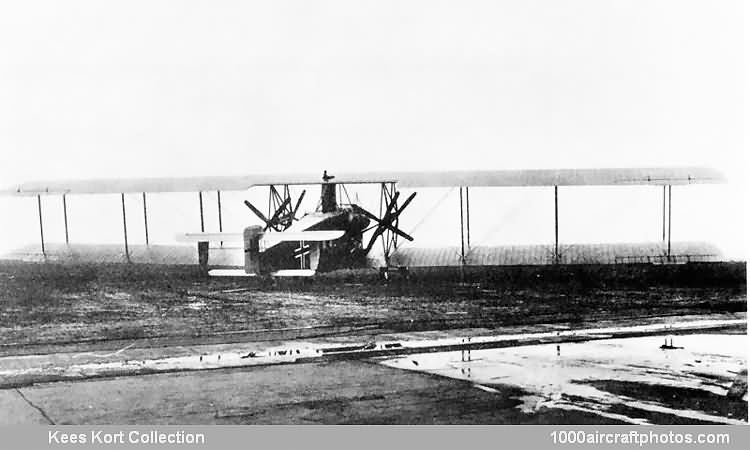06/30/2009. Remarks by Kees Kort: "The Siemens-Schuckert R.VIII, designed by the brothers Franz and Bruno Steffen, was the last Riesen Flugzeug (giant aeroplane) built by the Siemens-Schuckertwerke GmbH at Siemensstadt, near Berlin, Germany. Design studies on this machine started in November 1916, but eventually the machine was rolled out of the factory March 1, 1919.
This machine was the largest built up to this time, as indicated by these wing parts, with a span of 157 ft 5.8 in (48 m) and an empty weight of 23,149 lb (10,500 kg). Just as the previous Siemens-Schuckert R-types the engines were buried in the fuselage, in this extreme case six 300 hp Basse & Selve BuS.IVa engines. Via a complex combination of gear boxes and outrigger shafts, two two-bladed tractor propellers and two four-bladed pusher propellers were driven.
As Siemens-Schuckert had no experience with the design and building of such an enormous machine, a complete wooden mockup was made of which photos exist dated April 1917. As all big projects, it took much longer than planned to construct the machine and the end bill was much higher, actually 850,000 Mark.
Engine tests of the R.VIII started in June 1919, but fate struck before it ever flew as on June 6 one of the four-bladed pusher propellers disintegrated during engine tests, severely damaging the aircraft. The upper port wing and the propeller support collapsed. The German government did not want to bear the cost of reconstruction of the machine, so the aircraft was cancelled.
It is often thought that all aircraft construction in Germany ended at the Armistice date (November 11, 1918), but that was not the case. Large factories could not shut down immediately and lay off their complete work force, which would surely result in social unrest. So with allied consent production was sanctioned in several cases.
Technically the R.VIII was the limit what could be constructed in wood, German engineers were already designing projects for all-metal giant bombers sometimes monoplanes. As this machine was so big, flying it needed special measures to make it possible for the pilots to fly it. The machine was fitted with a new invention of Anton Flettner, patented, which were servo-controls or trim tabs. The eight-wheel landing gear mounted under the wings had no rubber tires, due to shortages in rubber wire wheels were used with wooden rims bound with steel bands."
